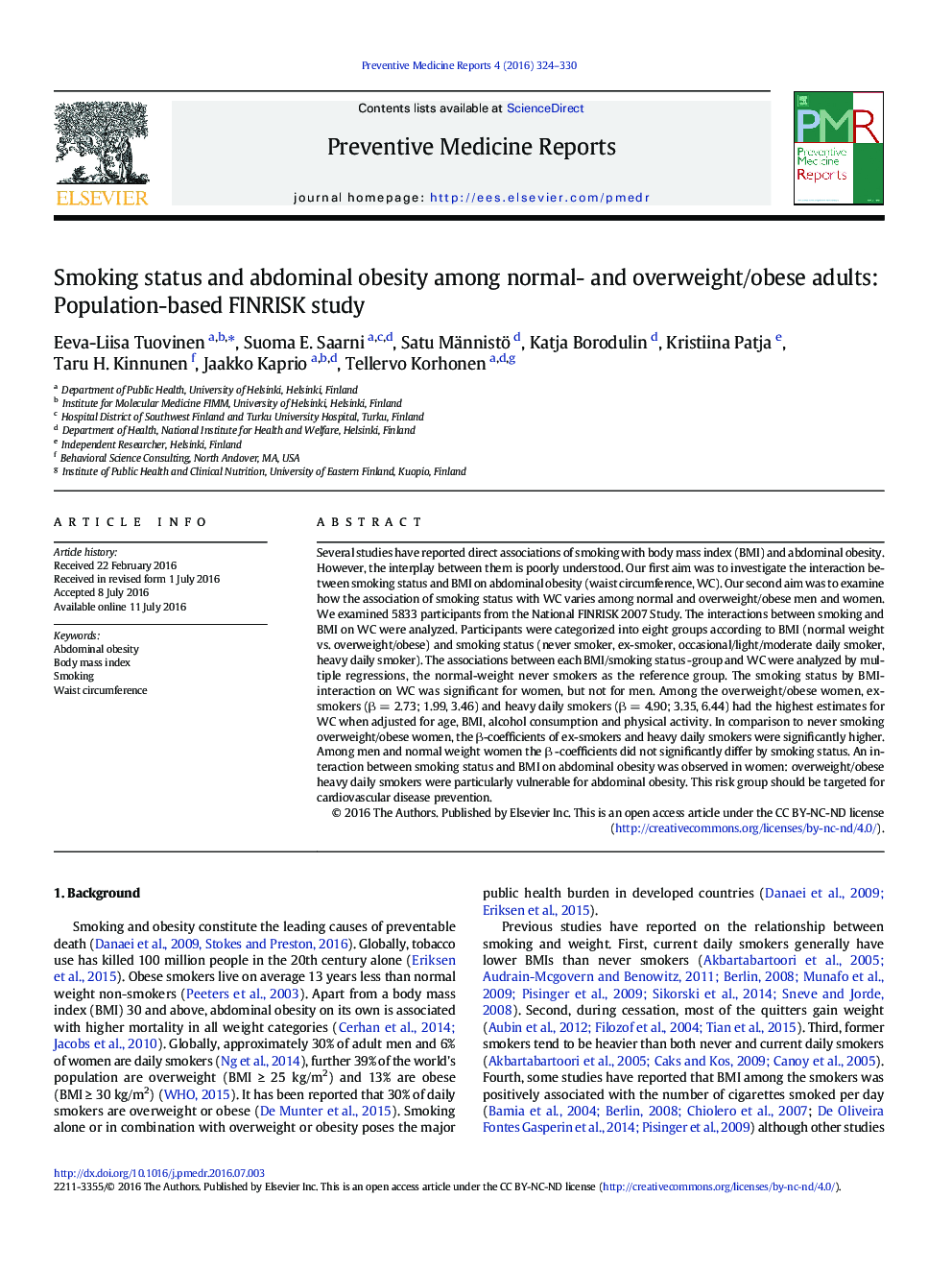| Article ID | Journal | Published Year | Pages | File Type |
|---|---|---|---|---|
| 4202278 | Preventive Medicine Reports | 2016 | 7 Pages |
•There was a smoking status by BMI-interaction on abdominal obesity (AO) in women.•In overweight/obese women, heavy daily smokers were the most vulnerable for AO.•Among overweight/obese women, also ex-smokers had elevated AO.•Risk for AO due to smoking and overweight should be noted in clinical practice.•Smoking cessation interventions should also address post-cessation weight gain.
Several studies have reported direct associations of smoking with body mass index (BMI) and abdominal obesity. However, the interplay between them is poorly understood. Our first aim was to investigate the interaction between smoking status and BMI on abdominal obesity (waist circumference, WC). Our second aim was to examine how the association of smoking status with WC varies among normal and overweight/obese men and women. We examined 5833 participants from the National FINRISK 2007 Study. The interactions between smoking and BMI on WC were analyzed. Participants were categorized into eight groups according to BMI (normal weight vs. overweight/obese) and smoking status (never smoker, ex-smoker, occasional/light/moderate daily smoker, heavy daily smoker). The associations between each BMI/smoking status -group and WC were analyzed by multiple regressions, the normal-weight never smokers as the reference group. The smoking status by BMI-interaction on WC was significant for women, but not for men. Among the overweight/obese women, ex-smokers (β = 2.73; 1.99, 3.46) and heavy daily smokers (β = 4.90; 3.35, 6.44) had the highest estimates for WC when adjusted for age, BMI, alcohol consumption and physical activity. In comparison to never smoking overweight/obese women, the β-coefficients of ex-smokers and heavy daily smokers were significantly higher. Among men and normal weight women the β -coefficients did not significantly differ by smoking status. An interaction between smoking status and BMI on abdominal obesity was observed in women: overweight/obese heavy daily smokers were particularly vulnerable for abdominal obesity. This risk group should be targeted for cardiovascular disease prevention.
